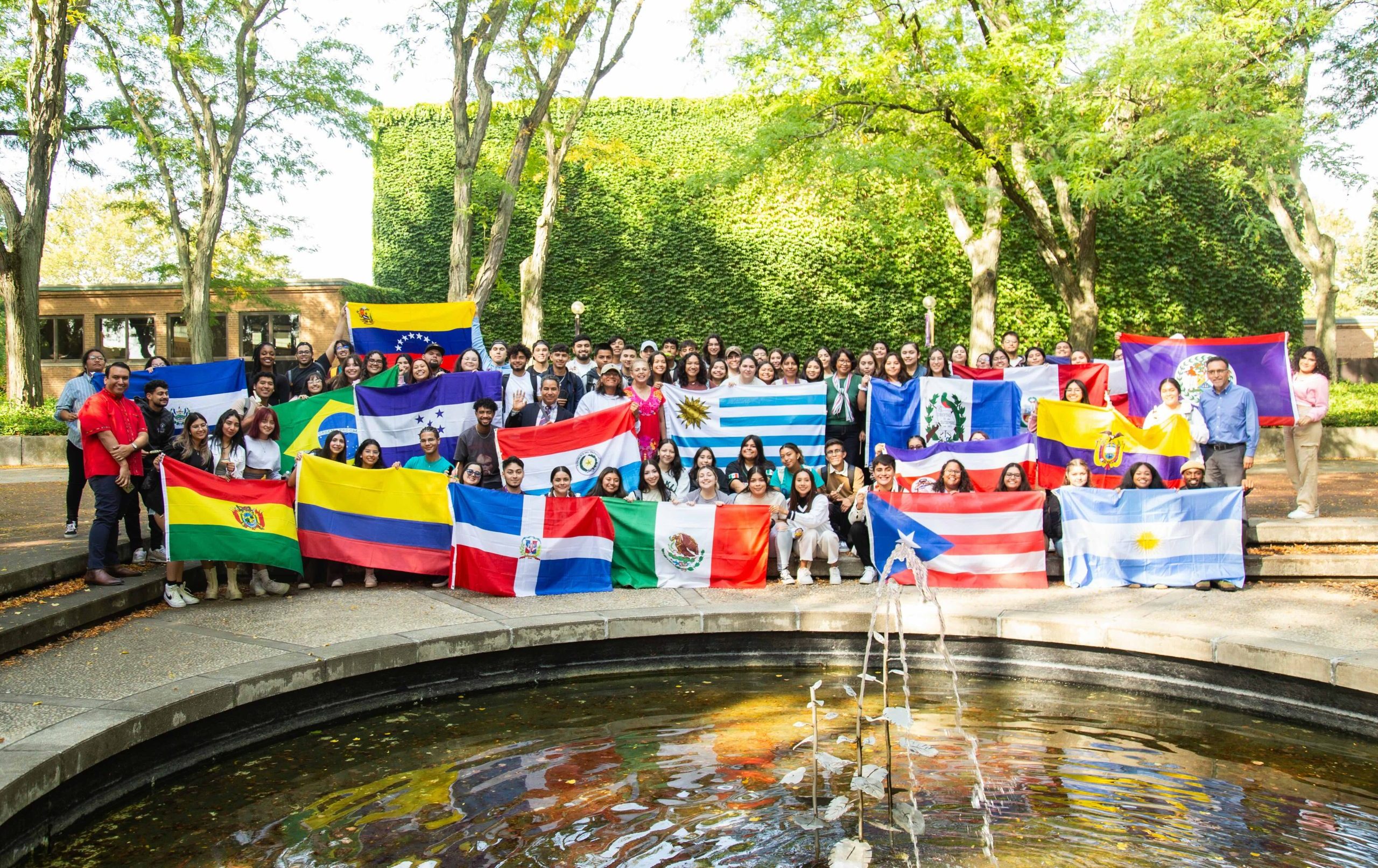Make a donation for Giving Tuesday and have your gift doubled! Give now

Being an Inclusive, Diverse and Equitable Community
At Goshen College, our diversity is essential to our academic excellence and vibrant community.
We are committed to promoting an equitable educational and work environment that is free from discrimination, harassment and retaliation in accordance with Title IX of the Education Amendments of 1972, Title VII of The Civil Rights Act of 1964, the Age Discrimination in Employment Act, the Americans with Disabilities Act, other applicable federal and state laws, and college policy.
As we teach, learn and seek truth together, our diversity invites us to see in new ways, to recognize new problems, to imagine new solutions, to realize our strengths and to claim justice.
How We Define Inclusion, Diversity and Equity
Inclusion
Inclusion means fostering a campus environment where people feel respected, accepted, and connected. It ensures that community members engage authentically and participate in the ongoing evolution of campus life.
Diversity
Diversity encompasses how people are both different and similar. It includes many intersecting dimensions, such as race, ethnicity, gender, sexual orientation, language, culture, beliefs, neurodiversity, physical ability, socio-economic status, immigration status and more.
Equity
Equity means reducing disparities in opportunities, experiences and outcomes for all members of the college community. It addresses historical and current social bias and exclusion, including how social structures and policies disadvantage some groups while benefiting others.
Why is this important?
At Goshen College, our diversity is essential to our academic excellence and vibrant community. As we teach, learn and seek truth together, our diversity invites us to see in new ways, to recognize new problems, to imagine new solutions, to realize our strengths and to claim justice. Only in working together toward inclusion, connection and equity do we gain the knowledge and skills needed to succeed in life, leadership and service, and to create a more just, civil and joyful society.
Arising from Anabaptist-Mennonite tradition, we value and honor the inherent dignity of each person. Teaching and learning about diversity and through our diversity connects our academic excellence, real world experience, and active love for God and neighbor. This leads us to continually enrich and grow the diversity of our students, faculty and staff.
What do we mean?
We seek to understand, engage and celebrate our diversity, meaning all the ways that people are both different and similar. Diversity has many dimensions that intersect in a wide variety of ways; these include, for example, race, ethnicity, gender, sexual orientation, age, language, intellect, culture, religion, disability, mental and physical health, class and immigration status. Equity means an intentional focus to reduce disparities in opportunities, experiences and outcomes for all members of the campus community. And inclusion means belonging to a campus environment in which people are respected, accepted and connected to one another.
How will we do this?
As we intentionally integrate equity, diversity and inclusion throughout our mission and operations, we continually strive to increase our awareness of how aspects of our campus culture facilitate or impede our efforts, and to address historical and current manifestations of bias and exclusion. We want to be known as a place where people go out of their way to learn to know one another and where all campus members feel at home — in our classrooms, departments, residence halls, religious life, event venues, athletic facilities and work spaces.
To advance this vision, we will make inclusion, diversity and equity awareness, knowledge and skills-building an integral part of the GC educational experience for all of us — our leadership, employees and students. This means having the courage to acknowledge our history and break through our silence, our shame and our fear about racism, sexism, ableism, classism and other forms of discrimination and bias. This call for transformation will always be our ongoing work in progress, and we commit to continually improve our trustworthiness and accountability.
Note: The above are “working definitions” — our work is happening in this context and our work will also evolve these definitions. The definitions draw upon these sources:
- Diversity Toolkit Introduction, National Education Association (accessed July 25, 2018)
- Museus & Jayakumar, eds, Creating Campus Cultures, pp 12-17; Routledge, 2012
- Ginsberg & Wlodkowski, Diversity & Motivation, 2nd Ed, Chapter 2; Jossey Bass, 2009
- “Qualitative Inquiry for Equity in Higher Education.” ASHE Report on Higher Education 2012.